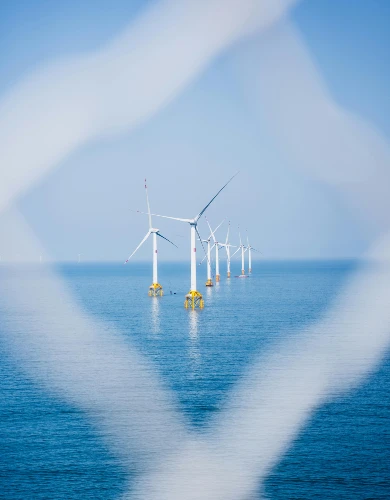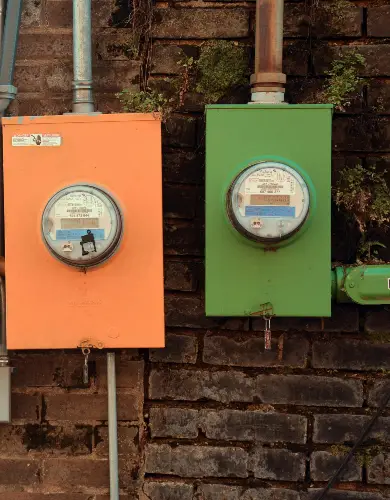Drax: The largest biomass power station in the world
Yorkshire is home to the single biggest power generator in Britain and the largest biomass power station in the world: the Drax Power Station.
Here are three facts that demonstrate why this power station is both interesting and controversial:
- Drax generates 5% of Britain’s power and will provide a vital source of back-up renewable electricity necessary for the decarbonisation of the national grid.
- Drax burns 6.5 million tonnes of wood each year, the vast majority of which is imported from abroad.
- The owner of Drax reported £1 billion in profits last year, largely built on environmental subsidies for burning biomass.
This article covers Drax’s past, present, and future, its controversial low-carbon credentials, and its implications for net zero.
A brief history of Drax Power station
Drax is a thermal power station that uses combustion-generated heat to turn water into pressurised steam that produces electricity by turning an electric turbine (generator).
It was originally envisioned as the main power source for the industrial Humber region of Yorkshire, with any excess capacity from its coal-power boilers destined for the national grid.
It was gradually built and expanded throughout the 1960s to the 1980s, eventually becoming Europe’s largest coal power station (and most prominent polluter) at its peak.
Drax experienced turbulent times following the UK’s privatisation of the energy sector, changing hands multiple times before finding stability when purchased by the Drax Group in 2005.
With the shift toward green policies in the 2000-10s, Drax envisaged a bold transition into ‘carbon negative’ biomass electricity as its only means of keeping its colossal infrastructure alive. It would need to adjust its boilers to burn wood pellets instead of coal and adopt geological Carbon Capture and Storage (CCUS).
How would they fund this? Drax utilised UK government green policies that envisaged biomass energy as an integral part of the ‘green fuel mix’ that would guarantee energy security while keeping up with 2050 net-zero targets.
Using these business energy grants, Drax converted four of its six coal-powered boilers to work on biomass energy and closed its last remaining coal unit in 2023.
Drax biomass conversion timeline
Here’s a concise timeline of Drax’s rapid conversion to adapt to changing times:
| Year(s) | Event |
|---|---|
| 2004 | Selby Coalfield, Drax’s main feedstock mine, closes down. |
| 2008 | Drax begins co-firing biomass with coal. |
| 2012 | Drax secures funding and approval to convert coal units to biomass. |
| 2012 - 2018 | Conversion of coal units into biomass. Unit 1 (2013), unit 2 (2014), Unit 3 (2016), Unit 4 (2018). Two remaining coal units are needed for grid balancing services at the request of the national grid. |
| 2023 | Drax final coal unit closes. Drax generates 5% of the UK’s electricity. |
| 2027 | New Drax subsidy regime starts to apply. |
What is the current situation at Drax?
Drax currently generates 5% of the UK’s electricity mix from four converted biomass boiler units that run predominantly on wood pellets produced abroad. It closed its last coal unit closed in 2023.
Unlike UK wind farms or solar power, Drax’s electricity output doesn’t depend on weather conditions but on its wood pellets supply, which is kept predictably well-stocked in its storage yard.
Drax can generate dependable baseload renewable electricity, which can be adjusted to help balance supply and demand within minutes to provide a direct alternative to gas power stations.
Drax primarily received subsidies from the UK government through Contracts for Difference (CfDs) and the Renewables Obligations scheme, which expires in 2027.
Drax is working on optimising the processes of bioenergy carbon capture and storage through two ongoing pilot projects. Drax aims to begin construction of carbon capture technology at the Drax Power Station in 2027.
Why did Drax switch from coal to biomass?
Drax’s infrastructure is worth billions of pounds and is optimised for transporting, stockpiling, and burning colossal amounts of raw materials, previously (until 2023) coal.
Once the government consolidated its green energy policies in the 2000s and ’10s, the Drax Group decided that upcycling the existing infrastructure by switching to biomass burning was the logical solution for producing low-carbon energy and adapting to changing times.
With the help of the UK government, Drax went all-in and re-fitted its boilers for wood pellets while setting up an elaborate supply chain to source ‘the most climate-positive’ wood pellets available from the large forestry industry of the US, with the remaining coming from Canada and the Baltic Countries.
💡Why look abroad? The UK does not have enough biomass output to power Drax’s four biomass units, which consume over 6.5 million tonnes of wood pellets each year, the majority of which are sourced from the United States and Canada.
Who owns Drax Power station?
The owners are Drax Group, a company listed on the London Stock Exchange that is part of the FTSE 250 Index that includes some of the UK’s largest businesses.
Drax Power Limited is the power station operator and is also owned by Drax Group.
The group also owns wood pellet manufacturing facilities across the US and Canada in a bid to have direct influence over the international supply chain of Drax’s feedstock.
The group owns several hydroelectric schemes in Scotland, including the Cruachan Power Station, which is known for its pumped storage hydro capabilities.
Drax is also a business energy supplier, primarily serving large business energy customers in Britain. Drax offers a suite of decarbonisation services to companies, including green business energy tariffs and support in arranging corporate Power Purchase Agreements.
Find out more in our guide to Drax business energy.
Where is Drax Power station?
Drax is named after the village and civil parish in the Selby District of North Yorkshire, where the power plant is located.
This location is strategic as it is part of the Humber industrial area of Yorkshire, which is envisaged to become one of the UK’s clean industry hubs.
How are wood pellets manufactured?
Most wood pellet production is akin to making sausages in the meat industry, with the goal of utilising residues to create a calorific product.
Woodchip residues from across the US and Canadian timber industries are gathered and compressed into dense pellets that are easy to store and transport and have a high calorific value.
Most wood pellet producers in the US (which represents the bulk of the supply) have set up shop near Baton Rouge in Louisiana. There, pellets are loaded in bulk into vessels headed for the UK ports of Immingham and Liverpool, which are optimised for bulk wood cargo.
The final journey into Drax’s stockyard is typically via rail.
Are wood chips sustainable?
The sustainability of the Drax Power Station is a highly contentious issue.
Drax argues that using wood chips as a biomass source offers sustainable energy generation since the trees used in the timber industry absorb carbon dioxide during their growth.
When the wood chips are combusted for energy, Drax asserts that the carbon dioxide released is simply the same carbon dioxide that was absorbed during the trees’ growth, making the entire process carbon-neutral.
The argument for sustainability relies on the concept that new trees are planted by the timber industry, rather than existing forests being cut down.
In August 2024, Drax was fined £25 million following an Ofgem investigation that concluded the company had “weak procedures, controls, and governance” regarding the type of forestry used in its wood chips.
It is notable that the investigation did not find any evidence that the biomass being used at Drax was not sustainable.
What are the drawbacks of Drax’s biomass plan?
Many environmental groups and researchers disagree that biomass is good for the climate.
They believe that many projects don’t follow sustainable practices and that the carbon offset delay between the slow growth of a tree compared to its instant combustion in a furnace is not representative of the current urgency for emissions reduction.
Also, peer-reviewed research indicates that biomass’s carbon emissions are actually larger than those from coal, which may be part of the reason that Drax Group was recently excluded from the S&P index of the world’s greenest energy companies following the exclusion of biomass as clean energy.
What’s next for the Drax power station?
In February 2025, the UK government announced a new subsidy agreement with Drax for the use of the power station between 2027 and 2031.
Under the agreement, the Drax Power Station will operate only when there is a deficit of power generation from wind, solar, and nuclear power stations.
Drax will act as a back-up renewable alternative, allowing the grid to avoid relying on gas power stations.
According to the government, the new agreement with Drax will reduce the level of subsidy by half to an estimated £470 million annually.
A value-for-money assessment from Drax suggests that the new agreement will result in £1.6 to £3.1 billion in system cost savings, leading to a reduction in domestic and business electricity prices.
Drax Power station – FAQs
Our business energy experts answer commonly asked questions on Drax.
Is the Drax Power station closing?
No. While Drax Power Station closed its last coal unit in 2023, it continues generating biomass power from its converted units, currently producing about 4% of the UK’s electricity. The output of Drax is approximately half of the planned Sizewell C power station.
Being both a cornerstone renewable and baseload power source, it is very unlikely that Drax will close anytime soon, although its reception of government subsidies is due a review in 2027, which may affect its long-term future.
How does Drax Power station work?
Drax Power Station is a thermal power plant that burns wood pellets in its four converted boiler units to produce baseload electricity and grid stability services for the national grid. See here for details on how burning wood pellets generates electricity.
It receives wood pellets via rail and keeps them stored in its stockyard, which holds up to 80,000 metric tons of wood pellets in four large domes, each for each boiler.
Can other types of pellets be burnt at Drax?
Drax Power Station is specifically configured to burn wood pellets, particularly those made from compressed sawdust.
However, is it technically possible to use other types such as spent coffee ground pellets sourced from the UK’s cafe industry, as these can also generate large amounts of heat from combustion.

